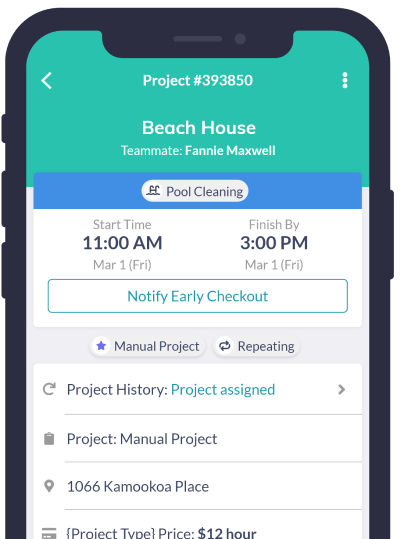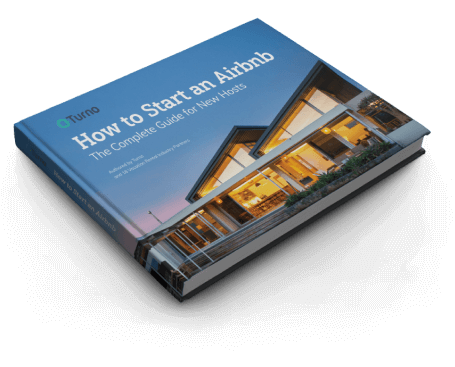1. Choosing the Best Location
Your intention for the property will influence the first buy box consideration: location. If the property is slated for ample personal use, whether on the weekend between guests or for full summers away, then you should consider your optimal property destination.
Is it best if the property is close by, or near friends and family? Would you prefer, for personal use, proximity to nature, local immersion, or a vacation spot you love to return to?
If the property isn’t intended primarily for personal use, then other metrics and considerations come into the equation.
Some new-to-market companies are making it easier to access market insights, including the average stay length, occupancy, and price rate for properties across different markets. Study the trends in primary, secondary, or tertiary markets with high nightly averages that can likewise sustain high occupancy rates.
Beginning with those high-demand markets, real estate investors can then get more specific in keying in on their desired location. Properties located near attractions like football stadiums, colleges, conference centers, concert halls, hiking trails, or waterfronts often see improved demand and Airbnb guest affinity.

2. Setting Your Budget
Following location, a crucial consideration is a realistic look at an expected budget. The financial planning stage incorporates important questions regarding the property’s funding strategy.
Short-term rentals are unique in the real estate market, which, as an asset class, has outperformed its market peers for more than 150 years. Holding most investors back from scaling their real estate portfolio is the fact that real estate investments are largely illiquid. Even as properties increase in their value, it’s hard to access those gains in wealth.
But short-term rentals are unique in that along with the property appreciation, frequent tenant payments — as often as every few days — create real returns early on. With a little bit of research, hosts can understand the revenue potential of their property and plan for a multi-tiered performance that’s seasonally adjusted to understand how the monthly returns will impact their financial strategy.
The inertia of real estate investing is that property values are high, mortgage rates are rising, and investors need clarity around their purchase strategy. Do they plan to finance the property, pay in cash, or invest in a small group? Are they hoping to scale their portfolio quickly, or will this one property be the focus for most of their investable capital?
All of these change the host’s initial orientation as they set themselves up for financial success with their rental.
3. What’s Your Type?
The short-term rental market is a niche that’s gained popularity with the ascent of Airbnb and the demonstrable traveler preference toward alternative accommodations after the wake of the COVID-19 pandemic.
But even within this market niche, there are subclasses of property types that hosts need to consider before they source their property. Single-family homes, multifamily units, and properties in condo buildings all have slightly different audiences.
Surprisingly, multifamily properties in buildings with 40 doors or less have seen some of the best returns from travelers in recent months. Hosts can seek more data through free tools as they consider which kind of property they’d like to begin with.
In conjunction with proper data-based due diligence, the property type question also returns the host to their initial objective, and whether or not the property is intended for personal use.

4. A Nuanced Look at Monthly Returns
Having goals for target returns and revenue outcomes is useful in two important ways.
First, goals — when properly researched — can be a way of keeping the property strategy aligned with its potential. They can also highlight opportunities to make changes that might increase the rental income closer to what the numbers say it should be.
The second benefit of proper financial goal setting is the ability to move with those numbers through the months, ensuring that the net operating income (NOI) will be where it needs to be considering both the necessary investments, the expected returns, and the inevitable cash-intensive turns in the road that can happen along the way.
Hosts should have target returns for their short-term rental’s gross yield, cash-on-cash returns, and capitalization rate.
- Gross yield: The gross yield of an investment is its profit before taxes and expenses are deducted.
- Cash-on-cash returns: Cash-on-cash returns refers to the cash income earned on the cash invested in a property. It’s calculated by dividing the annual pre-tax cash flow by the total cash invested.
- Capitalization rate: The capitalization rate measures an investment property’s yield in a one-year time frame. Also known as cap rate, it is used to compare the rate of return on multiple real estate properties. It’s calculated by dividing the net operating income by the current market value of the asset.
In addition to the above, monthly revenue goals should be calculated with real-time, seasonally adjusted data from comparable rentals in the area. It’s important to understand the performance of similar market offerings to understand what a host can expect for market demand, which is highly location- and season-dependent.
With those variables taken into consideration, hosts will have a more accurate understanding of how their property can be expected to create returns at different times of the calendar year.

Do the Math and Choose the Right Airbnb Investment Property
Ideating around location, planning a budget, considering property type, and undergoing a proper target return analysis will leave investors well prepared to take on the next stage of their short-term rental journey.
From there, it’s time to leave some of the math behind and move on to the art of property sourcing.







